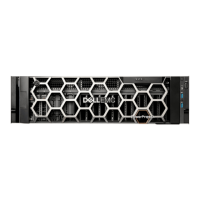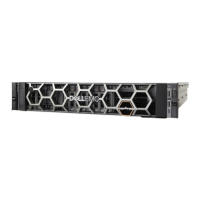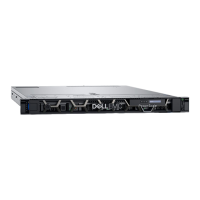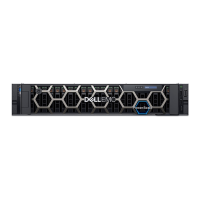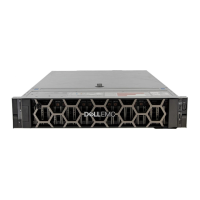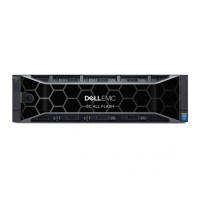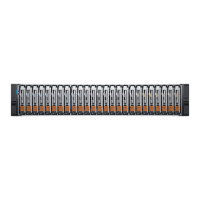You can begin the CLI configuration wizard manually by typing config setup.
After you complete the basic configuration with a wizard, you can use additional configuration controls in DD System Manager
and the CLI to further configure the system.
DD System Manager configuration wizard
DD System Manager provides a single, consolidated management interface that allows for configuration and monitoring of many
system features and system settings.
Configuring the network
Prerequisites
To avoid IP address conflicts with the DDOS-iDRAC interconnect, do not configure 169.254.0.<X> and 169.254.1.<X> IP
addresses.
Steps
1. Enter yes to configure the system for network connectivity.
Network Configuration
Configure Network at this time (yes|no) [no]:
yes
2. Enter yes to configure DHCP (Dynamic Host Configuration Protocol) to obtain network parameters (such as, the host
name, domain name, and IP addresses) dynamically from a DHCP server. Or enter no to configure the parameters manually.
Use DHCP
Use DHCP for hostname, domainname, default gateway
and DNS servers? (At least one interface needs to
be configured using DHCP) (yes|no|?)
3. Enter a fully qualified domain name (FQDN) for the host name; for example, str01.yourcompany.com. Or accept the
host name, if the system was able to discover it.
Enter the hostname for this system
(fully-qualified domain name)[]:
4. Enter the DNS (Domain Name System) domain name; for example, yourcompany.com. Or accept the domain name, if the
system was able to discover it.
Domainname
Enter your DNS domainname []:
5. Enable and configure each Ethernet interface. Accept or decline DHCP for each interface. If the port does not use DHCP to
discover network parameters automatically, enter the information manually.
Ethernet port ethMa
Enable Ethernet port ethMa (yes|no|?) [no]:
yes
Use DHCP on Ethernet port ethMa (yes|no|?) [no]:
Enter the IP address for ethMa [192.168.10.185]:
Enter the netmask for ethMa [255.255.255.0]:
Ethernet port ethMb
Enable Ethernet port ethMb (yes|no|?) [no]:
no
6. Enter the IP address of the default routing gateway. Or accept the default gateway, if the system was able to discover it.
Default Gateway
Enter the default gateway IP address:
192.168.10.1
7. Enter the IPv6 address of the default routing gateway. Or accept the IPv6 address of the default gateway, if the system was
able to discover it. If IPv6 is not in use, leave the field empty, and press Enter to continue.
Configure System for Use
79
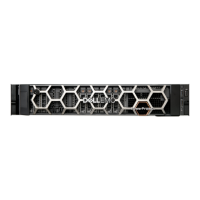
